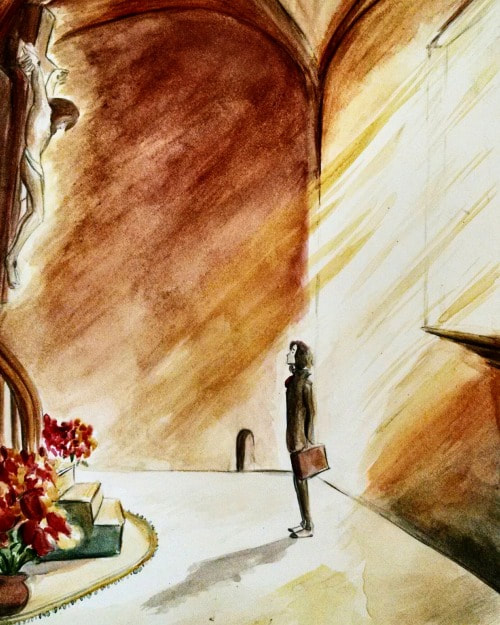|
Jesus’ death on the cross shows that there is a value to the passion of sacrificial love. It is the basis for romance. After all, what is the point of an epic story without a madly-in-love, self-forgetful hero? Romantic love thrives on inexplicable love for another and the possibility of loss. It thrives in the free will choice God has given us to choose him. The will-they, won’t-they possibility is what makes romance - the all-or-nothing possibility. We have to have the possibility of rejecting God to have the romance of choosing Him. Why is it that great love stories are told from the wild abandon of being willing to die out of love for someone? In the song “Nessun dorma” from the opera Turandot the protagonist sings that he will tell his name to Princess Turandot only when his lips are on hers. The challenge he has given her is that if she can guess his name then he will die. If not, he will marry her. There is no logical reason why he should fall in love with this cold-hearted princess and make a wager with death. But he falls in love with her all the same and hopes for her love. True passionate love, such as Jesus demonstrates to us, does not pass quickly. It is deep and constant, not excitable and quickly fading. It treats people as sacred. And sacredness is the antidote to a cynical world. Jesus’ death on the cross can be seen as a gesture of unabashed love and a demonstration of the way God operates. And its beauty invites us to forget ourselves. We see this self-forgetful beauty play out when there is unity in a good community, friendship, or marriage– people die to themselves and become remade in a new life and the sorrows of other possibilities are forgotten. The choice to love has been made and new life begins with peaceful joy - the reward of romance! And that is what we receive when we choose the God of Love. And that is something worth singing about.
0 Comments
Leave a Reply. |
Quis ut Deus?In search of the Face of God. Personal blog with musings, thoughts, and stories. Archives
June 2024
Categories |

 RSS Feed
RSS Feed